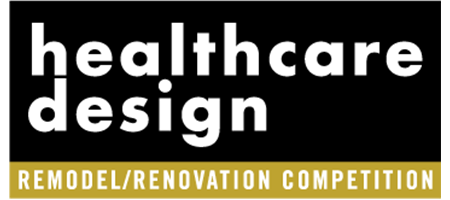Behavioral health hospitals are designed not only to deliver care but to create a healing and supportive environment. To better tailor that experience to each patient’s needs, many leading behavioral health hospitals are adopting “program communities,” a new approach designed to deliver nuanced patient spaces with customized treatment programs to support patient health and recovery.
These specially designed therapy suites supplement traditional treatment areas that serve the entire patient population by providing mid-sized rooms customized for diagnosis-specific programs. Here, care teams can deliver personalized treatment in ways that standard hospital layouts can’t within a single, large space that’s designed to serve a generalized population of multiple diagnoses. This supplementary design and treatment model is especially transformative for longer-stay facilities, where individualized care is critical to recovery.
By rethinking how treatment areas within behavioral health hospitals are organized, these facilities are setting a new standard for thoughtful and patient-centric mental health care.
Historical perspective on behavioral health design
In the early 20th century, the “Kirkbride Plan,” an early design for mental hospitals developed by Dr. Thomas Kirkbride, largely emphasized efficient living quarters over dedicated internal treatment spaces. This plan improved access to natural light in bedrooms through narrow building massing of double-loaded corridors and provided a sense of order and segregation, however it did not feature significant space for treatment programs.
In the 1980-90s, as psychiatric treatment modalities evolved, facilities began to incorporate separated living units and new, enhanced central “treatment malls,” large spaces where more therapeutic, vocational, and recreational amenities could be provided. The approach allowed patients time away from their units and a lifestyle that better resembled the daily rhythms of the outside world.
Today, to more effectively treat patients relative to their specific diagnosis (rather than grouping all treatment together), a shift is occurring from two primary types of patient spaces (residential and amenity) to a three-type model that includes program communities for customized care. This model features a small grouping of therapy and amenity spaces located around a central commons space just off the suite entry. While most program communities include some combination of smaller- and medium-sized group therapy and activity rooms, multiple cues can be drawn from the diagnosis and program-driven function of each community to inform unique design opportunities to better support recovery.
Facilities adopting program communities
Several newly designed behavioral health hospitals across the country illustrate this approach. For example, to complement its existing treatment modality of four customized therapy programs, Missouri’s Nixon Forensic Center at Fulton State Hospital in Fulton, Mo., was the first state replacement facility in the nation to feature program communities when it opened in 2019. While the previous facility included multiple, separate living areas and shared therapeutic and fitness amenities, its treatment space layout best supported higher-functioning patients who can tolerate activities within medium- or larger-sized populations.
To fill the need for patients who could leave the living area during the daytime but were better served by smaller, diagnosis-aligned groupings, four program communities were implemented between the living units and the treatment mall: Social Learning, New Outlook, Recovery and Self-Motivation, and Admissions and Competency Restoration. These program communities bring together patients with similar cognitive, social, and mood disorders; those in recovery; and newly admitted individuals. They also enable targeted treatment and promote wellness and connection among groups.
Designed by Page (Washington, D.C.), the design architect on the project, each program community has distinctive design elements, with special attention toward acoustic separation and the provision of ample quiet and sensory spaces. For example, design for High-Acuity programs, which include patients with schizophrenia or severe cognitive and social deficits, emphasizes de-escalation and safety, including high visibility, glazing, calming colors and graphics, and small observable group rooms.
The Recovery and Self-Motivation program, which includes patients in recovery and progressing towards re-acclimation into society, features more rehabilitating amenities and treatment modalities such as building materials, tools, clay, computer access, normalized furniture, and financial and transaction simulations. These exercises help prepare patients for tasks outside the hospital, upon discharge. The Admissions program community often includes practice spaces that focus on inpatient life and skills, such as a courtroom simulation.
The communities are located within Fulton State Hospital and adjacent to living units whose population they most often serve and to the larger facility-wide treatment mall. Fulton State Hospital’s former Chief Operating Officer Marty Martin-Forman highlights the value of incorporating these specialized areas alongside unit treatment spaces: “Program communities enable patients to move from where they live to a period of ‘work’ (their transitional customized treatment), and eventually to a greater ‘outside community life’ within the hospital’s larger treatment mall.”
Customized care programs
To further customize its care delivery, Virginia’s Central State Hospital in Petersburg, Va., will feature five program communities when it opens in early 2027. Similar to Fulton State Hospital’s Recovery and Self-Motivation program, the Virginia facility will offer a community dedicated to advanced patients in recovery.
Others include a Medical/Cognitive program for patients with sensory issues, paranoia, dementia, physical challenges, or autism; a High Acuity program for those with severe personality disorders or aggressive behaviors who aren’t ready for larger group settings; a flexible Social Learning program for patients needing intensive rehabilitation or support with socialization; and room for a possible fifth program, potentially designed for substance use treatment.
“Program communities can help bring safe and effective treatment to more unique patients that may not have had access otherwise, and in a more customized way,” says Dr. Brandi Justice, director of Central State Hospital.
Unit design considerations
At Fulton State Hospital and Central State Hospital, the program communities vary in size based on the population of each program and desired amenities, ranging from approximately 2,000 to 4,000 square feet. Furnishings and layout are similarly customized by program and diagnosis.
For instance, Central State’s Social Learning community includes a multiuse sensory room with a living aquarium and other sensory and tactile features. Fulton’s Admissions and Competency Restoration program community includes conference and work rooms designed for inpatient skills and courtroom simulations.
Colors, lighting, and materials are selected considering the diagnosis or therapy programs.
For example, High Acuity communities feature high staff visibility and calming colors and graphics, which are helpful for de-escalation and safety, whereas Recovery communities might feature a more varied color palette and outwardly focused graphics, such as images of the surrounding community.
Promising post-occupancy results
Post-occupancy evaluations, including studies by Page at Fulton State Hospital from 2022-2024, and anecdotal clinical feedback have shown benefits in both the degree of specialization and the overall number of therapy sessions clinicians are able to provide.
Nixon Forensic Center’s Program Director Rachelle Birkner reported that the number of groups has increased (since the previous “Biggs” facility, which did not include Program Communities) by approximately 28 percent.
“The most notable benefits are the varying types of groups we can now have (art, education, therapy, mindfulness, etc.); the ability to host multiple groups at the same time; and locating the groups in an area other than the dayroom, which assists with minimizing distractions,” Birkner says. Program Director Tammy Smiley adds that each program community can now hold diagnosis-focused group sessions simultaneously due to the additional program community spaces, which never happened before.
Behavioral health hospitals reflect the therapeutic response to patients and the critical needs of the staff providing care. The incorporation of program communities represents an enhanced individualized and human-centered approach that supports customized diagnoses and modality-driven therapy, presenting a more effective way of assisting patients on their path to recovery.
Eric Kern, LEED AP BD+C, is the behavioral health director and a principal at Page (Washington, D.C.) and can be reached at [email protected].












